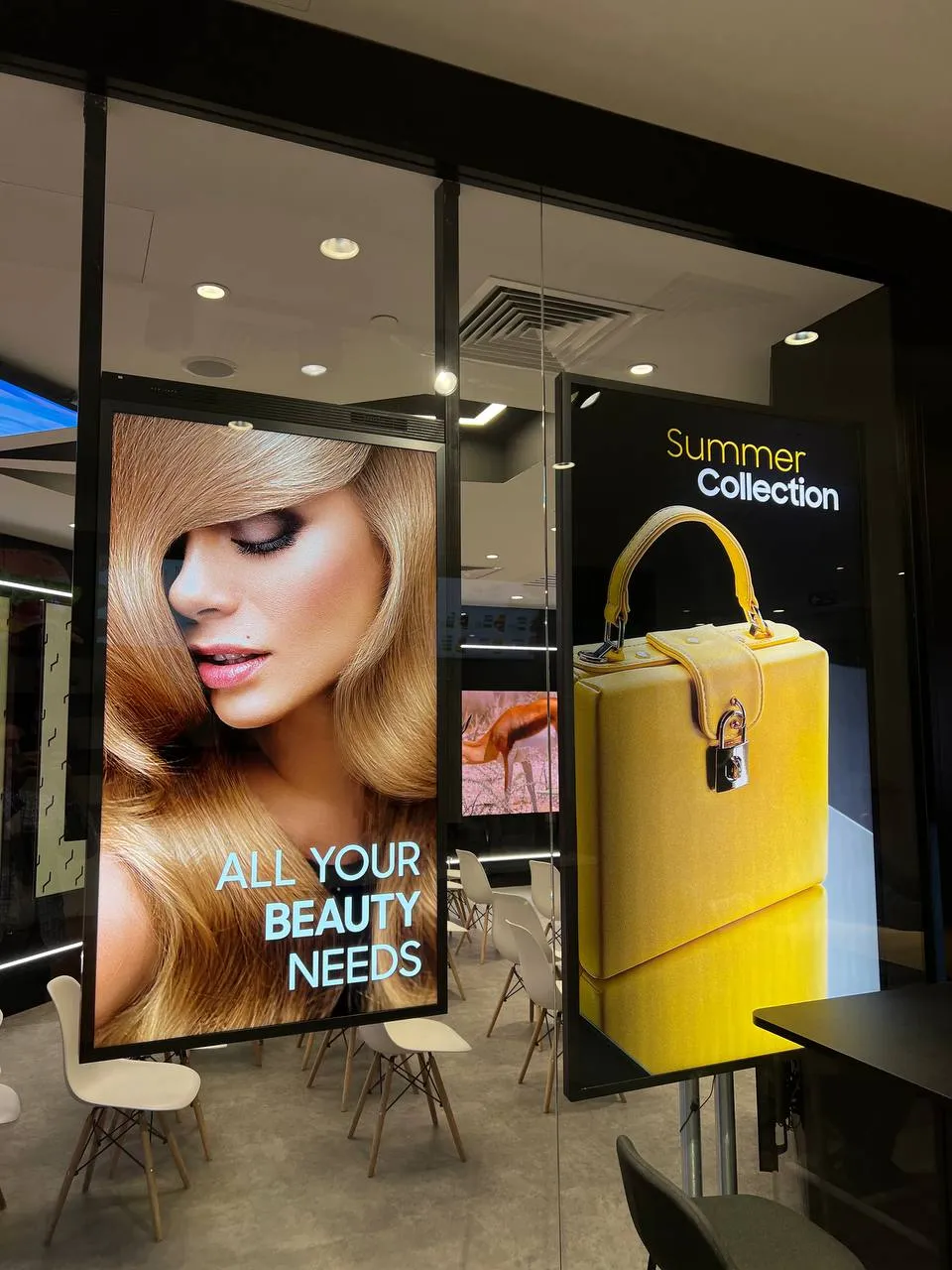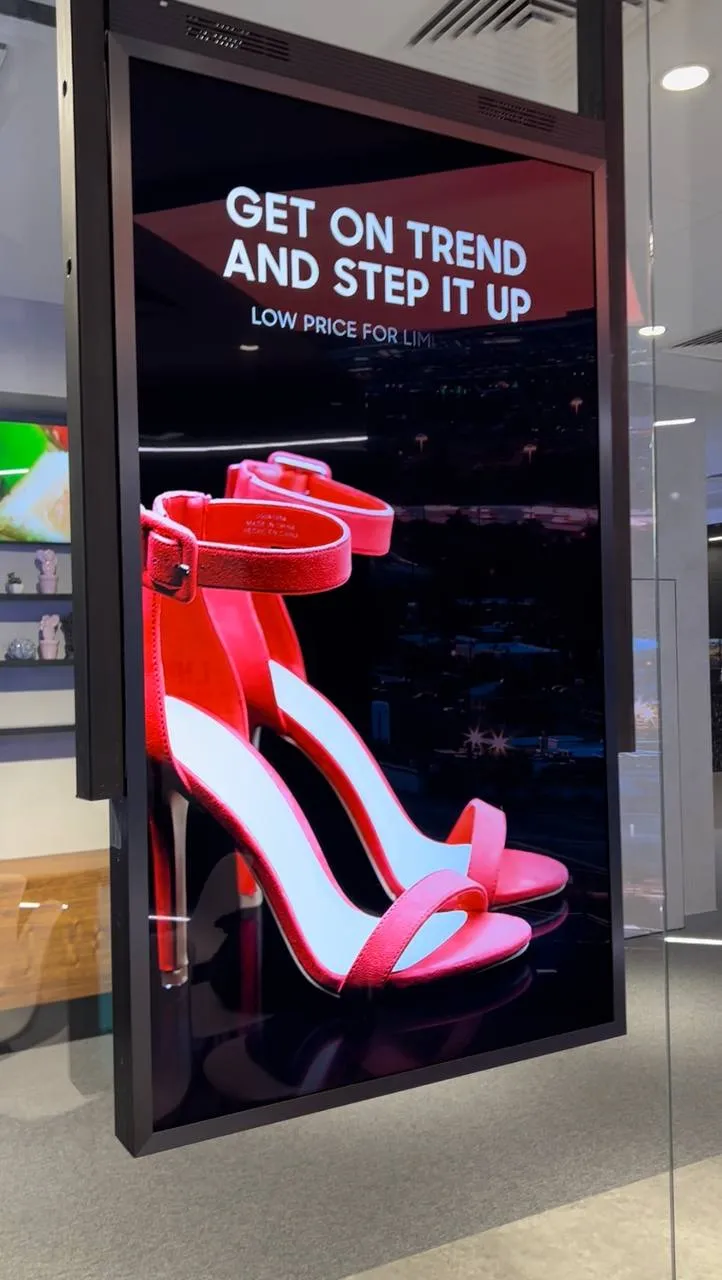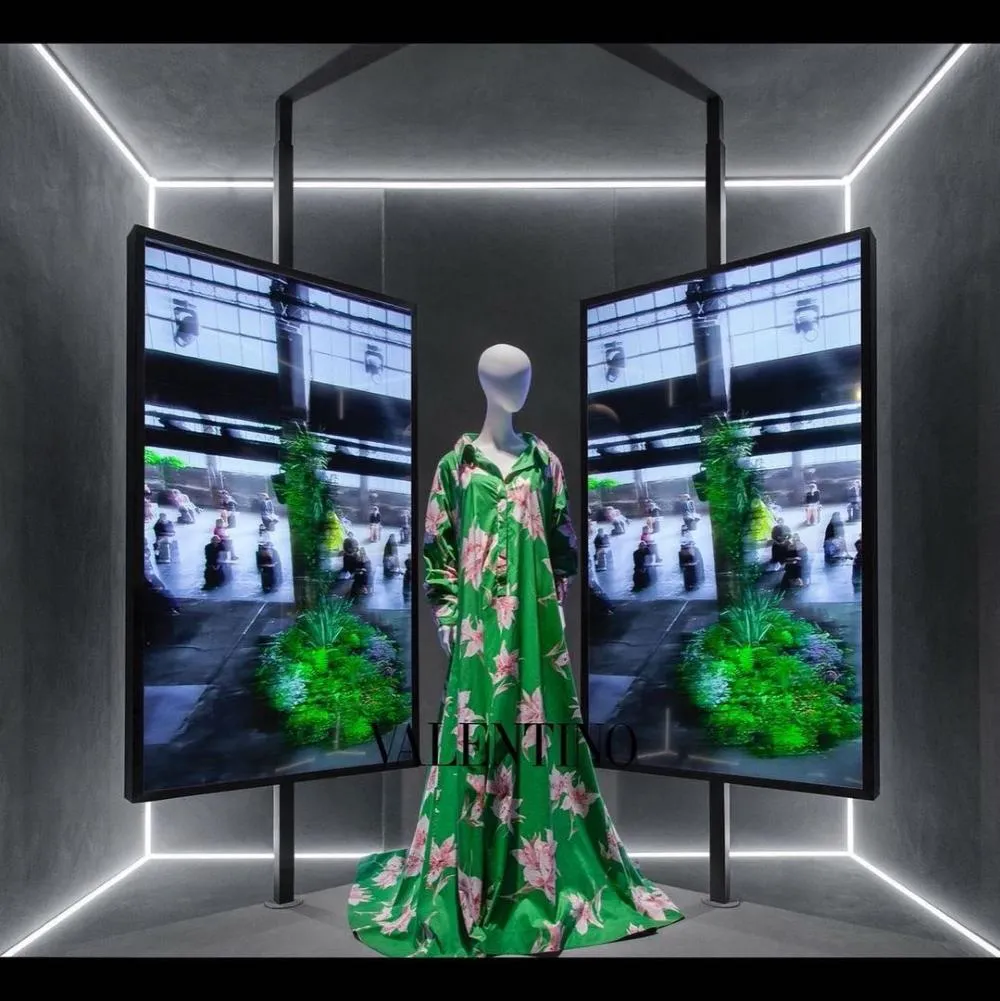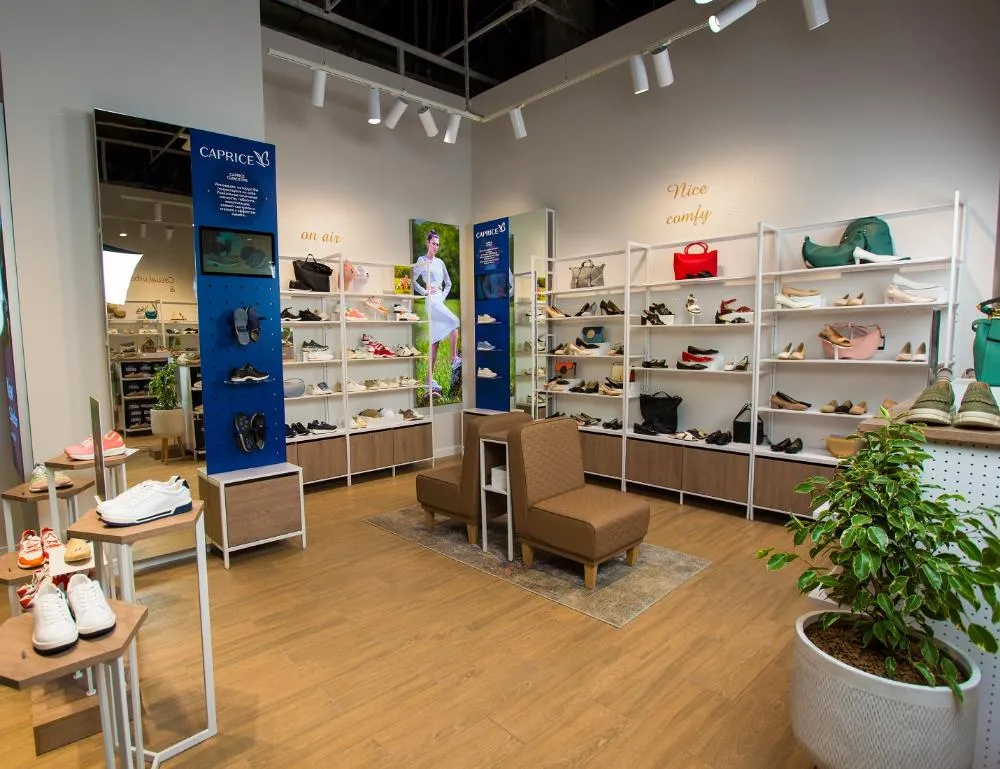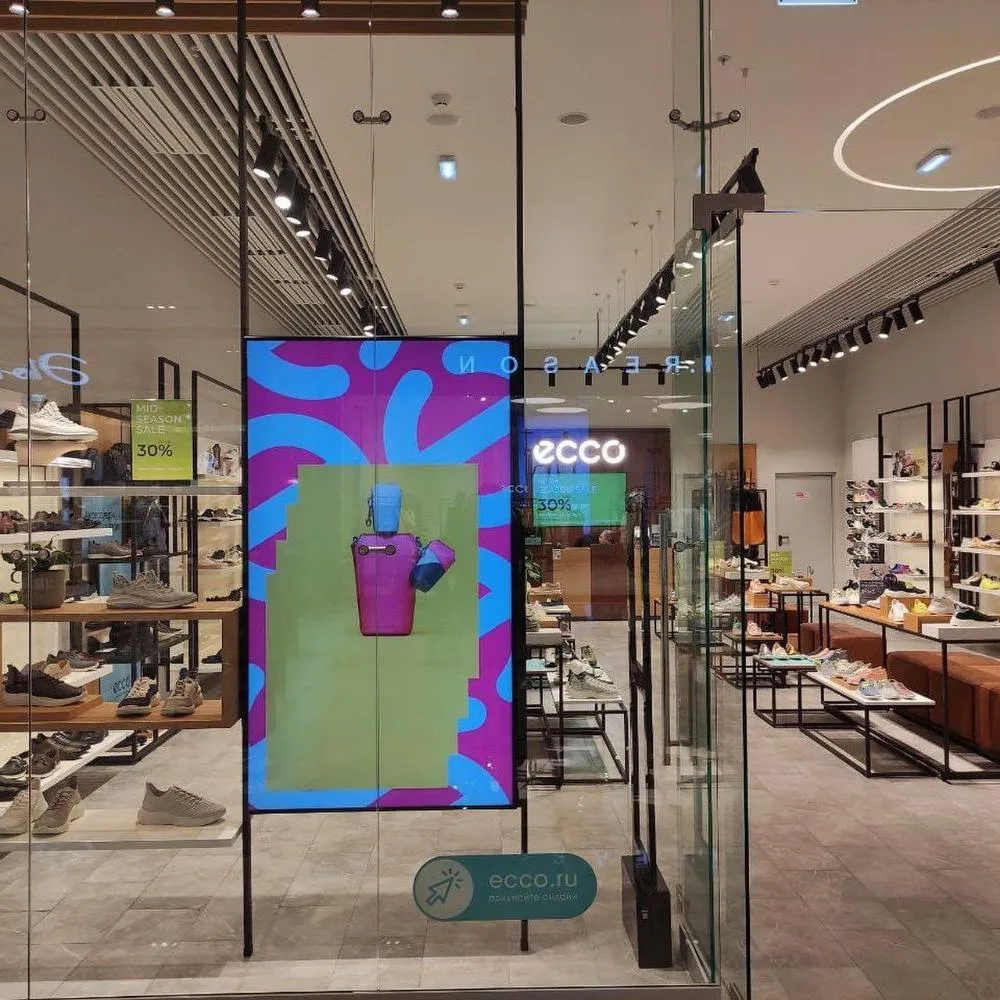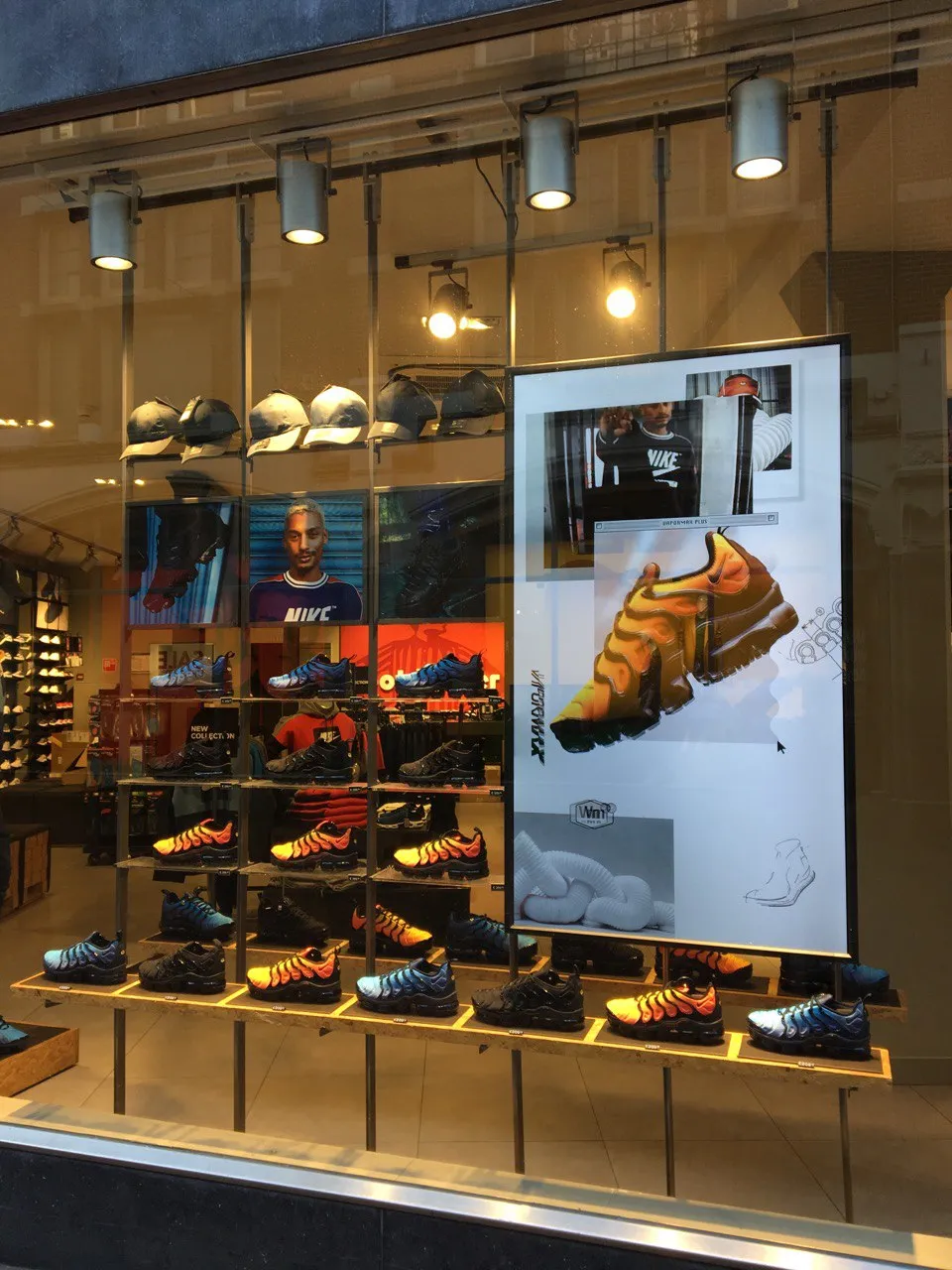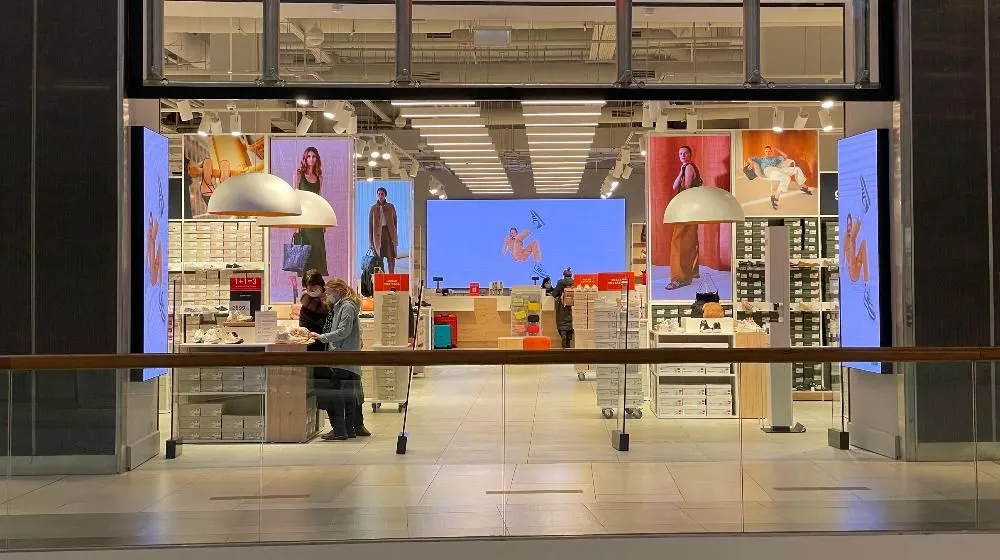
Should a shoe store spend money on digital screens?

Surely, many of you have paid attention to screens in clothing and footwear stores, and someone may have thought about purchasing them for their outlets. Or, perhaps you have already bought them and even installed them. Screens in shop windows and on the trading floor are one of the tools for communication with customers, product and brand presentation, the growth of which is noticeable. The fact that a dynamic screen can become a magnet that attracts the attention of buyers is an indisputable fact. Why does a shoe store need such a screen, is it worth spending money on it and how to use it later, SR deals with professionals - an expert in visual merchandising, window dressing and store building Marina Polkovnikova and a specialist in the development and integration of digital solutions for fashion retail Dmitry Chidirov.
 Marina Polkovnikova -
Marina Polkovnikova - founder and head of VMC Retail agency, expert in visual merchandising and store building; @marinapolkovnikova_official, Vmcreta
 Dmitry Chidirov - Director of digital-integrator for retail company "Electronic money". 100+ sales support technology projects, including for Ecco, Camper, Dolce&Gabbana, Tele2, M.Video, MegaFon, Rigla and others.
Dmitry Chidirov - Director of digital-integrator for retail company "Electronic money". 100+ sales support technology projects, including for Ecco, Camper, Dolce&Gabbana, Tele2, M.Video, MegaFon, Rigla and others. Dmitry, Marina, tell us about the use of screens in retail? What tasks can they help a shoe store solve?
D.Ch.: Screens in retail - digital signage technology - is a tool for informational and emotional communication with customers.
The technology is not so much new as it has not yet been mastered by retail.
With the right approach, technology opens up great opportunities for shoe stores. With their help, you can:
- favorably highlight your point of sale;
- draw attention to your offers;
- develop omnichannel;
- increase the number of regular customers.
MP: Screens in modern stores are already a must-have, since we have been living in the digital world for a long time, and today clip thinking is developed to one degree or another by every person: all of us, being in social networks, scroll pages, stories, channels and accounts. It is the clip thinking of a modern person that makes us use video content in stores. Thus, the screen in the showcase space is, first of all, attracting attention in a clip way: when something changes dramatically, actively, we involuntarily pay attention to it.
Video panels serve not only to attract attention, but also to inform about the product, promotions and inform about new arrivals. Highlighting your point of sale is another important function of a video screen: if the neighbors do not have screens, but you do, plus they are still coolly beaten in the store, for example, along with mannequins, then it looks very unusual and attractive.
To draw attention to a new collection, a promotional campaign, to some advanced technology, as, for example, the German brand Caprice does, video screens successfully cope with all this. They help develop omnichannel, especially if these are touch-effect (interactive) screens, when you can approach the screen and communicate with it - ask questions, study collections, and so on.
But when store owners think about integrating video screens into the retail space and storefronts, many of them don't know exactly what needs to be done to achieve this. Someone thinks: "Yes, what's so difficult about it - to buy a screen and tell a story, and, in fact, that's it." Someone looks at colleagues, competitors, large retailers who already have screens - large wall video panels, small screens where video content of various formats is shown, and tries to make something similar on their own. As a result, both those and others face problems when the screens are already bought, and understand that everything is not so simple.
One of the main questions - is it worth it for a shoe store to spend money on digital screens, and how to qualify these expenses - as an investment or an expense?
D.Ch.: The possibilities of modern screens as a means of visual display of information are almost limitless. It is important to prepare for their conscious application and make the right choice from the huge, rapidly changing technology market. In order to achieve a business goal - to convey your message to customers using a screen, it is not enough just to buy a screen.
Based on our experience in implementing technologies in retail, I can say that modern store technologies (in this case, video screens) are often perceived by the retail business solely as costs and are not thought out in a single trading concept. In practice, it looks like this: the screen was bought before its use was thoroughly thought out, as a result, there was no return, the results did not meet expectations, and the owner’s conclusion was such that they spent money in vain.
The results are coming to those retailers who see digital technologies as business opportunities that are inextricably linked with other sales tools - as opportunities to create a competitive advantage, increase sales, reduce costs and dependency on staff, and so on.
When will it be right to make a decision to integrate a video screen into the retail space?
D.Ch.: The ideal moment to decide on the use of screens in the store is the design of this store. The brief for the development of the store concept should also include information about what tasks the business would like to solve using screens.
Designing a store or redesigning individual areas with the integration of screens into them that will influence buyers with broadcasts requires specialized competencies - specialized specialists that retailers need to protect investments in technology. As in any other professional matter.
Where is the best place to install video screens, what zones are the most effective?
D.Ch.: The most effective areas and goals for placing screens in shoe stores are:
- showcase - we attract traffic, increase brand awareness;
- display area - increase conversion, reduce dependence on sales staff;
- checkout - we increase the average bill, increase loyalty, provide seamless integration with ecom-omnichannel.
How and what content is selected for digital screens?
D.Ch.: What and how to fill the screen, do you have content that is interesting to the buyer, and where to get it - these questions should be asked at the design stage, and not when the screen has already been purchased, installed - and then you realized that you have nothing special to show . Ideas for the content and presentation of the material, sources of content are important issues that determine the success of the project.
MP: I agree with my colleague! Thinking about the content that you can broadcast to customers should still be at the stage of designing and developing the concept of integrating video screens. And in life it often happens when a retailer installs vertical video screens, which in concept look very beautiful and more attractive than horizontal ones, and in fact it turns out that he does not have vertical video content. An important point that needs to be discussed with designers at the very beginning. I know from practice that more often companies shoot horizontal content, while vertical content is filmed on a phone, more often for social networks on a phone camera, and it has different technical requirements.
Here is a good example from my practice: the Caprice brand, which had limited video content, wanted to tell customers about new advanced insole technologies, and show the development on video in the brand's new store in Surgut. The idea was to enhance the image of Caprice as a developer of advanced technologies in footwear with the help of video. We knew that the company only had horizontal filming at the very beginning of the work and successfully integrated horizontal video screens into the already finished new design concept. There were certain restrictions on the dimensions of the screens and the design of the trading floor, but in the end, we managed to take into account all the nuances and implement the idea as it was intended.
And how to make the video sequence interesting and eye-catching?
D.Ch.: It is important to seize the moment. While most retailers haven't figured out yet that a single "bright spot" on a screen isn't enough to attract shoppers, make your digital installations really interesting, "hooking" shoppers, making them stop and delve into the essence of what they see on the screen. We recommend actively using such opportunities as:
- Broadcast design. For example, an addition to the main video/photo block of a hot offer block, a ticker, weather/currency widgets;
- setting up a broadcast schedule - we broadcast the most relevant content;
- creative arrangement of screens - Lego-combinatorics is used (a composition of several screens).
MP: I agree with Dmitry about the use of screens in retail.
It is also important to find the right locations for video screens and choose the content that will hit right on target. It will be just a logo, or a promotional story, or an image shoot, or a professional selection of photos - all formats work if they are well thought out and correctly, beautifully presented. Moreover, the choice of screens should be approached only through the prism of your content and your capabilities in its creation - then the chances that everything will look very decent and cool in the end are very high.
What screens are used in retail? I think that an ordinary TV panel bought at a hardware store will not work here ...
D.C.: In successful projects, only professional screens are used, because only they ensure the quality and continuity of broadcasts, which means they guarantee the necessary perception of your offer by buyers.
The huge difference in sensations from looking at the broadcast of professional and domestic screens will be clear to every person at the first glance at the screen. To do this, you do not need to understand the technical capabilities, the viewer sees this intuitively.
Household TVs should not be used for the following main reasons:
* they will not provide the necessary brightness;
* will "glare";
* the image will not be visible if you move away from the screen to the side;
* they can not work continuously in the schedule of the shops, so they will often break down;
* they do not have built-in capabilities for remote content management.
The experience of household TVs in a store subconsciously reduces the value of the goods and services presented to customers.
MP: How will you manage your content on screens purchased from electronics stores? No, only manually. Household TVs can be used in retail, but they will require a whole range of special gadgets with additional costs that are not obvious at the start. And there are many such pitfalls with household appliances, so we encourage you to think about video screens at the stage of developing a new design concept through the prism of what video content you already have / will have, and what you will broadcast, what message you want to convey to customers through the screens . In retail, professional video screens are used more often. In order for the purchase of a screen not to become an article of loss, but to be a good investment, you need to prepare for it and understand your capabilities - and can you, as a company, constantly generate content; what information you want to broadcast; where will the screen be located or where is it integrated, if we are talking about a ready-made store?
With the right approach, a video screen can become part of a large concept, it can work as another seller and beautifully broadcast all the necessary information to buyers. And this, by the way, is another big plus of the video screen compared to lightboxes with interchangeable images, which are cheaper at the moment, but more expensive to maintain and operate over a period (year).
D.Ch.: Yes, if you compare a lightbox and a video screen, then four times a year to change the lightbox (the whole frame and a removable canvas) costs the same as buying and integrating one global screen. Within a year, the video screen fully pays for itself.
If we compare household and professional video panels, then they are tens of percent more expensive than household ones, but not at times. Choosing household appliances for professional purposes, you generate costs, choosing professional solutions - you invest, invest in the growth of your business. Such an answer to the question with which we began our conversation.
| Please rate the article |
Materials on the topic
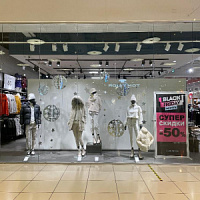
Mistakes in the lighting of the sales area that spoil the impression of a shoe store
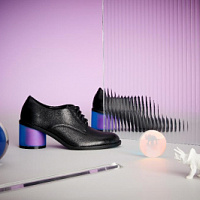
Technical aspects of display space and current trends in its design
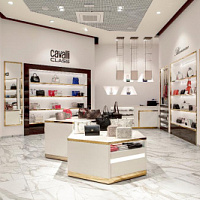
Design rules for a shoe and accessories store
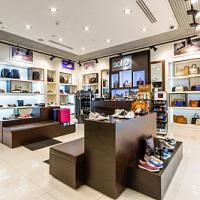
Pandemic-influenced visual merchandising transformation for shoe and accessories store
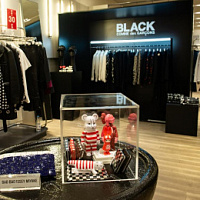
Pop up presentation
Popular
 Coach turned to Big Data analysis and won the interest of a young audience
American handbag brand Coach has planned the success of its Tabby model among a younger audience, Generation Z, by turning to big data analysis, abandoning traditional and analogue tools, such as human intuition or the ability of any executive to sense “which way the wind will blow,” writes B.O.F.
Coach turned to Big Data analysis and won the interest of a young audience
American handbag brand Coach has planned the success of its Tabby model among a younger audience, Generation Z, by turning to big data analysis, abandoning traditional and analogue tools, such as human intuition or the ability of any executive to sense “which way the wind will blow,” writes B.O.F.
 IDOL updates the concept
The IDOL brand, part of the Melon Fashion Group portfolio, opened the first flagship in an updated concept in the Aviapark shopping center in Moscow.
IDOL updates the concept
The IDOL brand, part of the Melon Fashion Group portfolio, opened the first flagship in an updated concept in the Aviapark shopping center in Moscow.
 Seven “sins” of the shoe business. How do owners harm the company with their own hands?
Why is Company X able to create a strong, profitable brand, but Company Y is struggling to make ends meet? Many people prefer to attribute success to luck, luck, or the support of strong patrons. And few people ask themselves the question: “What am I doing wrong?” Moreover, many entrepreneurs begin to harm their business from the first day of its opening. In this article, together with SR expert in the field of fashion business management and development, Maria Gerasimenko, we will look at the 7 main “sins” that business owners commit using specific examples.
Seven “sins” of the shoe business. How do owners harm the company with their own hands?
Why is Company X able to create a strong, profitable brand, but Company Y is struggling to make ends meet? Many people prefer to attribute success to luck, luck, or the support of strong patrons. And few people ask themselves the question: “What am I doing wrong?” Moreover, many entrepreneurs begin to harm their business from the first day of its opening. In this article, together with SR expert in the field of fashion business management and development, Maria Gerasimenko, we will look at the 7 main “sins” that business owners commit using specific examples.
 Louis Vuitton opens a new factory in Italy
Louis Vuitton has opened its second shoe factory in Italy. After opening the first one in Fiesso d'Artico in Veneto, the LVMH flagship brand has just opened a new production site dedicated to this category of footwear in the industrial zone of Civitano in the Marche region. There is also another brand production facility in Tuscany, where bags and leather accessories are produced, writes fr.fashionnetwork.com.
Louis Vuitton opens a new factory in Italy
Louis Vuitton has opened its second shoe factory in Italy. After opening the first one in Fiesso d'Artico in Veneto, the LVMH flagship brand has just opened a new production site dedicated to this category of footwear in the industrial zone of Civitano in the Marche region. There is also another brand production facility in Tuscany, where bags and leather accessories are produced, writes fr.fashionnetwork.com.
 The Euro Shoes@CAF exhibition will be held in Almaty
From March 11 to 13, the Euro Shoes@CAF (Central Asia Fashion) exhibition will be held in Almaty at the Atakent exhibition complex. The exhibition, which is the largest international event in the fashion industry in Central Asia, will present collections of clothing, shoes and accessories.
The Euro Shoes@CAF exhibition will be held in Almaty
From March 11 to 13, the Euro Shoes@CAF (Central Asia Fashion) exhibition will be held in Almaty at the Atakent exhibition complex. The exhibition, which is the largest international event in the fashion industry in Central Asia, will present collections of clothing, shoes and accessories.
 Euro Shoes will start operating on February 19 in Moscow!
The winter session of the international exhibition of footwear and accessories Euro Shoes premiere collection will be held in Moscow at the Expocenter from February 19 to 22. The organizers promise the presence of all the main participants at the exhibition, as well as new names from Europe, Asia and Russia.
Euro Shoes will start operating on February 19 in Moscow!
The winter session of the international exhibition of footwear and accessories Euro Shoes premiere collection will be held in Moscow at the Expocenter from February 19 to 22. The organizers promise the presence of all the main participants at the exhibition, as well as new names from Europe, Asia and Russia.
 American buyers couldn't buy Birkin bags and sued Hermès
French fashion house Hermès is facing a lawsuit in California from two customers who were unable to purchase exclusive Birkin bags. The fashion house is accused of unfair commercial practices.
American buyers couldn't buy Birkin bags and sued Hermès
French fashion house Hermès is facing a lawsuit in California from two customers who were unable to purchase exclusive Birkin bags. The fashion house is accused of unfair commercial practices.
 Why Rendez-Vous and Yandex Lavka released a “bread bag”
Shoe retailer Rendez-Vous announced the launch of a spring collaboration with Yandex Lavka and released a roll that resembles the shape of a woman’s handbag. This “Bread Bag” is presented in the Yandex.Lavka application at a price of 249 rubles. On the product packaging there is a promotional code for 1000 rubles, which can be spent in the Rendez-Vous network.
Why Rendez-Vous and Yandex Lavka released a “bread bag”
Shoe retailer Rendez-Vous announced the launch of a spring collaboration with Yandex Lavka and released a roll that resembles the shape of a woman’s handbag. This “Bread Bag” is presented in the Yandex.Lavka application at a price of 249 rubles. On the product packaging there is a promotional code for 1000 rubles, which can be spent in the Rendez-Vous network.
 Camper has released innovative sneakers - designers
Spanish brand Camper's new Roku sneaker features six interchangeable components to create up to 64 different looks and color combinations. Roku means "six" in Japanese.
Camper has released innovative sneakers - designers
Spanish brand Camper's new Roku sneaker features six interchangeable components to create up to 64 different looks and color combinations. Roku means "six" in Japanese.
 Christian Louboutin presented a collection in a cowboy style
At the Loubi Show in Paris, the French luxury brand Christian Louboutin presented its fall 2024 collection, following the trend - in the style of the Wild West. It included cowboy boots and rhinestone loafers.
Christian Louboutin presented a collection in a cowboy style
At the Loubi Show in Paris, the French luxury brand Christian Louboutin presented its fall 2024 collection, following the trend - in the style of the Wild West. It included cowboy boots and rhinestone loafers.
 Fashion Week takes place in Moscow
Fashion Week takes place in the Russian capital. Events include fashion shows, markets where you can purchase clothes, bags and accessories, and a B2B Showroom for fashion industry professionals.
Fashion Week takes place in Moscow
Fashion Week takes place in the Russian capital. Events include fashion shows, markets where you can purchase clothes, bags and accessories, and a B2B Showroom for fashion industry professionals.
 Turkish brand Vaneda on Euro Shoes
Street style, sport, outdoor, military – the main style directions of footwear of the company from Turkey
Turkish brand Vaneda on Euro Shoes
Street style, sport, outdoor, military – the main style directions of footwear of the company from Turkey
 Kari accuses Zenden of unfair competition and is suing the FAS
The largest Russian shoe chain, Kari, appealed to the Moscow Arbitration Court to declare the actions of the Federal Antimonopoly Service (FAS) illegal, writes RBC.
Kari accuses Zenden of unfair competition and is suing the FAS
The largest Russian shoe chain, Kari, appealed to the Moscow Arbitration Court to declare the actions of the Federal Antimonopoly Service (FAS) illegal, writes RBC.
 Fashion trends Fall-Winter 2023/24 for commercial footwear purchases
Permanent contributor to Shoes Report. Elena Vinogradova, an expert in sales and purchases in the fashion business, prepared an overview of the trends for the autumn-winter 2023/24 season especially for us.
Fashion trends Fall-Winter 2023/24 for commercial footwear purchases
Permanent contributor to Shoes Report. Elena Vinogradova, an expert in sales and purchases in the fashion business, prepared an overview of the trends for the autumn-winter 2023/24 season especially for us.
 MSCHF and Crocs launch "Big Yellow Boots"
Creator of the Big Red Boots, Brooklyn brand MSCHF has teamed up with American plastic clog and sandal brand Crocs for another oversized shoe. The new Big Yellow Boots will go on sale on August 9th.
MSCHF and Crocs launch "Big Yellow Boots"
Creator of the Big Red Boots, Brooklyn brand MSCHF has teamed up with American plastic clog and sandal brand Crocs for another oversized shoe. The new Big Yellow Boots will go on sale on August 9th.
 Five rules of professional lighting for a shoe store - something that is relevant in any season
When developing a lighting concept for shoe retailers, it is important to take into account not only the history of the brand, the architectural content of the premises, the target audience of the stores, but also the seasonality of the goods. With the onset of the cold season, client preferences change: bright weightless shoes are replaced by more massive models in discreet dark colors. Despite significant differences in summer and winter collections, the overall philosophy of the brand, its recognition should remain unchanged at any time of the year. Tatyana Ryzhova, an SR lighting expert in fashion retail, has identified five basic rules for a competent lighting concept for a shoe store for readers of the magazine, which will help to present winter assortment to customers in a winning way.
Five rules of professional lighting for a shoe store - something that is relevant in any season
When developing a lighting concept for shoe retailers, it is important to take into account not only the history of the brand, the architectural content of the premises, the target audience of the stores, but also the seasonality of the goods. With the onset of the cold season, client preferences change: bright weightless shoes are replaced by more massive models in discreet dark colors. Despite significant differences in summer and winter collections, the overall philosophy of the brand, its recognition should remain unchanged at any time of the year. Tatyana Ryzhova, an SR lighting expert in fashion retail, has identified five basic rules for a competent lighting concept for a shoe store for readers of the magazine, which will help to present winter assortment to customers in a winning way.
 I doubt and object: how to find an approach to difficult clients?
How good and serene would be the work of a salesperson if the customers were calm, cheerful, always knew exactly what they wanted, and bought, bought, bought! It is a pity that this is possible only in dreams. Therefore, we will not dream, but we will act. Together with Maria Gerasimenko, a permanent author of SR, we understand the doubts and objections of buyers and build a strategy for working with them. Our expert pays special attention to the two main objections of buyers, on which 82% of sales are lost.
I doubt and object: how to find an approach to difficult clients?
How good and serene would be the work of a salesperson if the customers were calm, cheerful, always knew exactly what they wanted, and bought, bought, bought! It is a pity that this is possible only in dreams. Therefore, we will not dream, but we will act. Together with Maria Gerasimenko, a permanent author of SR, we understand the doubts and objections of buyers and build a strategy for working with them. Our expert pays special attention to the two main objections of buyers, on which 82% of sales are lost.
 EURO SHOES presents an updated section of the GLOBAL SHOES exhibition with collections of shoe and bag brands from Asian countries
EURO SHOES premiere collection is expanding. Along with the traditional pool of leading European footwear brands from Germany, Spain, Italy and Turkey, several dozen footwear and bag brands from the Middle Kingdom will be presented in the GLOBAL SHOES section at the Moscow Expocentre from August 29 to September 1.
EURO SHOES presents an updated section of the GLOBAL SHOES exhibition with collections of shoe and bag brands from Asian countries
EURO SHOES premiere collection is expanding. Along with the traditional pool of leading European footwear brands from Germany, Spain, Italy and Turkey, several dozen footwear and bag brands from the Middle Kingdom will be presented in the GLOBAL SHOES section at the Moscow Expocentre from August 29 to September 1.
 World Footwear Yearbook: Global footwear production reaches 23,9 billion pairs and is back to pre-pandemic levels
The Portuguese association of shoe manufacturers APICCAPS published the 13th edition of the international statistical bulletin World Footwear Yearbook for 2023, according to which in 2022 the production and export of shoes worldwide increased by 7,6% and 9%, respectively, and the world production of shoes reached 23,9 billion couples and returned to pre-pandemic levels.
World Footwear Yearbook: Global footwear production reaches 23,9 billion pairs and is back to pre-pandemic levels
The Portuguese association of shoe manufacturers APICCAPS published the 13th edition of the international statistical bulletin World Footwear Yearbook for 2023, according to which in 2022 the production and export of shoes worldwide increased by 7,6% and 9%, respectively, and the world production of shoes reached 23,9 billion couples and returned to pre-pandemic levels.
 Rostov footwear brand Novak presented a collection of sneakers and sneakers
In the spring-summer 2023 season, the Rostov-on-Don shoe brand Novak presented a cute collection of sneakers and sneakers for every day. The upper of the shoe is made of genuine leather, suede, nubuck, the sole is made of light EVA.
Rostov footwear brand Novak presented a collection of sneakers and sneakers
In the spring-summer 2023 season, the Rostov-on-Don shoe brand Novak presented a cute collection of sneakers and sneakers for every day. The upper of the shoe is made of genuine leather, suede, nubuck, the sole is made of light EVA.
 Jacquemus x Nike collaboration released
The second collaboration between Jacquemus and Nike, which has been talked about so much, is finally out. The appearance of the couple for many was a surprise. The model of Nike Air Force 1 sneakers, which was taken as the basis of the new collection, has undergone significant changes.
Jacquemus x Nike collaboration released
The second collaboration between Jacquemus and Nike, which has been talked about so much, is finally out. The appearance of the couple for many was a surprise. The model of Nike Air Force 1 sneakers, which was taken as the basis of the new collection, has undergone significant changes.
 Crocs releases a collaboration with Barbie
If Barbie ditched heels and wore crocs, they would be pink. It was this collection in pink that was released by the American brand of plastic clogs Crocs, for the release of the film "Barbie" in the United States.
Crocs releases a collaboration with Barbie
If Barbie ditched heels and wore crocs, they would be pink. It was this collection in pink that was released by the American brand of plastic clogs Crocs, for the release of the film "Barbie" in the United States.
 Japanese BAPE takes to the catwalk MSCHF Big Red Boots
The story of Brooklyn brand MSCHF's oversized rubber boots continues. The last time they made noise in the auditorium was at the Rick Owens menswear show. Now they have already appeared on the podium.
Japanese BAPE takes to the catwalk MSCHF Big Red Boots
The story of Brooklyn brand MSCHF's oversized rubber boots continues. The last time they made noise in the auditorium was at the Rick Owens menswear show. Now they have already appeared on the podium.
 Shoe educational program: what shoe soles are made of
“What is the difference between TEP and EVA? What does tunit promise me? Is PVC glue? What is the sole of these shoes made of? ”- the modern buyer wants to know everything. In order not to smash his face in front of him and be able to explain whether such a sole suits him in soles, carefully read this article. In it, process engineer Igor Okorokov tells what materials the soles of shoes are made of and what makes each of them so good.
Shoe educational program: what shoe soles are made of
“What is the difference between TEP and EVA? What does tunit promise me? Is PVC glue? What is the sole of these shoes made of? ”- the modern buyer wants to know everything. In order not to smash his face in front of him and be able to explain whether such a sole suits him in soles, carefully read this article. In it, process engineer Igor Okorokov tells what materials the soles of shoes are made of and what makes each of them so good.
 How to set prices that will earn
Some businessmen still confuse the concept of margin with the concept of trade margins and set prices for their goods, guided solely by the example of competitors. No wonder they go broke! Analyst at the Academy of Retail Technologies Maxim Gorshkov gives several tips and formulas with which you can set not only ruinous, but also profitable prices.
How to set prices that will earn
Some businessmen still confuse the concept of margin with the concept of trade margins and set prices for their goods, guided solely by the example of competitors. No wonder they go broke! Analyst at the Academy of Retail Technologies Maxim Gorshkov gives several tips and formulas with which you can set not only ruinous, but also profitable prices.
 Sales of shoes and accessories: effective techniques for business rhetoric
Which speech modules are effective in communicating with potential and current customers of shoe stores, and which are not, Anna Bocharova, a business consultant, knows.
Sales of shoes and accessories: effective techniques for business rhetoric
Which speech modules are effective in communicating with potential and current customers of shoe stores, and which are not, Anna Bocharova, a business consultant, knows.
 We form the salary of sellers: expert advice
“How do you charge your consultants for personal or general sales?” Is one of the most popular questions causing a lot of controversy and gossip on the online forums of retail business owners. Indeed, how to properly form the earnings of sellers? But what about bonuses, where to get a sales plan from, do employees allow them to buy goods at discounted stores? In search of truth, the Shoes Report turned to a dozen shoe retailers, but no company wanted to disclose its motivation system - the process of its development was too complicated and individual. Then we asked four business consultants, and finally became convinced that the topic of seller motivation is very complex, because even our experts could not come to a common opinion.
We form the salary of sellers: expert advice
“How do you charge your consultants for personal or general sales?” Is one of the most popular questions causing a lot of controversy and gossip on the online forums of retail business owners. Indeed, how to properly form the earnings of sellers? But what about bonuses, where to get a sales plan from, do employees allow them to buy goods at discounted stores? In search of truth, the Shoes Report turned to a dozen shoe retailers, but no company wanted to disclose its motivation system - the process of its development was too complicated and individual. Then we asked four business consultants, and finally became convinced that the topic of seller motivation is very complex, because even our experts could not come to a common opinion.
 Technology Selling Issues
There is nothing worse than meeting the buyer with the words “Hello, can I help you with something?”, Because the seller works in the store just to help. Criticizing this well-established pattern of communication with the buyer, Andrei Chirkarev, business coach for effective sales and the founder of the New Economy project, shares the technology of truly selling issues with readers of Shoes Report.
Technology Selling Issues
There is nothing worse than meeting the buyer with the words “Hello, can I help you with something?”, Because the seller works in the store just to help. Criticizing this well-established pattern of communication with the buyer, Andrei Chirkarev, business coach for effective sales and the founder of the New Economy project, shares the technology of truly selling issues with readers of Shoes Report.
 The whole truth about Bayer. Who is he and how to become one?
Bayer is no longer a new, but still a popular and sought-after profession. It’s fashionable to be a buyer. Buyers are at the origins of the emergence and development of trends. If the designer offers his vision of fashion in the season, then the buyer selects the most interesting commercial ideas. It is on buyers that the policy of sales of stores and what, in the end, the buyer will wear depends on. This profession is surrounded by a magical fleur, often associated with a lack of understanding of what exactly is the work of a buyer.
The whole truth about Bayer. Who is he and how to become one?
Bayer is no longer a new, but still a popular and sought-after profession. It’s fashionable to be a buyer. Buyers are at the origins of the emergence and development of trends. If the designer offers his vision of fashion in the season, then the buyer selects the most interesting commercial ideas. It is on buyers that the policy of sales of stores and what, in the end, the buyer will wear depends on. This profession is surrounded by a magical fleur, often associated with a lack of understanding of what exactly is the work of a buyer.
 Fur, and not only: types of lining
In the production of winter footwear, various materials are used that are designed to retain heat and meet the requirements of consumers: natural sheepleather, artificial fur, artificial fur from natural wool and others. All types of lining fur have their own advantages and disadvantages. Let's consider the properties of each of them.
Fur, and not only: types of lining
In the production of winter footwear, various materials are used that are designed to retain heat and meet the requirements of consumers: natural sheepleather, artificial fur, artificial fur from natural wool and others. All types of lining fur have their own advantages and disadvantages. Let's consider the properties of each of them.
 Retail Arithmetic
Before you begin to solve specific problems, you need to find out how accurately all the leaders of your company understand the basic terminology of retail.
Retail Arithmetic
Before you begin to solve specific problems, you need to find out how accurately all the leaders of your company understand the basic terminology of retail.
 How to fire a worker without tears, scandal and trial
Sooner or later, any manager is faced with the need to part with an employee. Properly and on time the dismissal procedure will save the company money, and the boss himself - nerves and time. But why sometimes, knowing that a break in relations is inevitable, we put off the decision for months?
How to fire a worker without tears, scandal and trial
Sooner or later, any manager is faced with the need to part with an employee. Properly and on time the dismissal procedure will save the company money, and the boss himself - nerves and time. But why sometimes, knowing that a break in relations is inevitable, we put off the decision for months?


